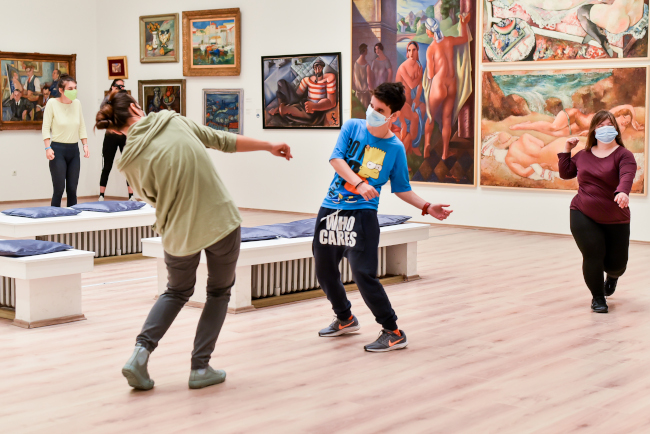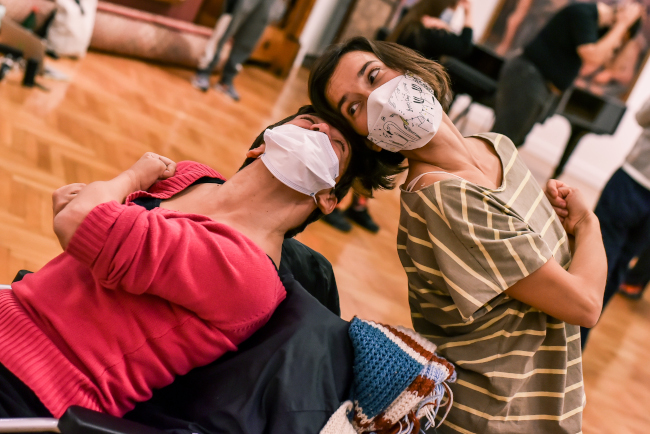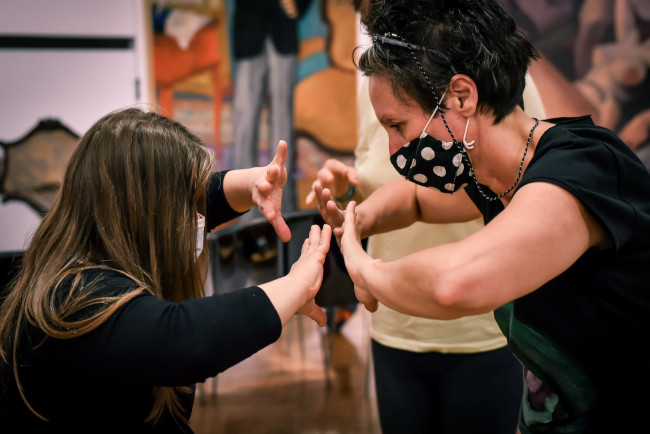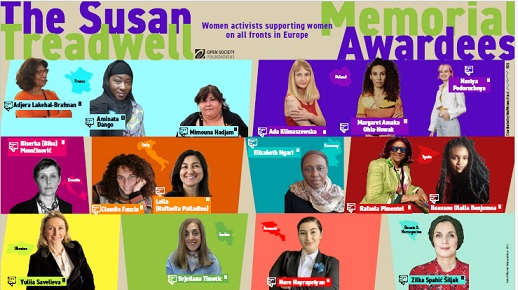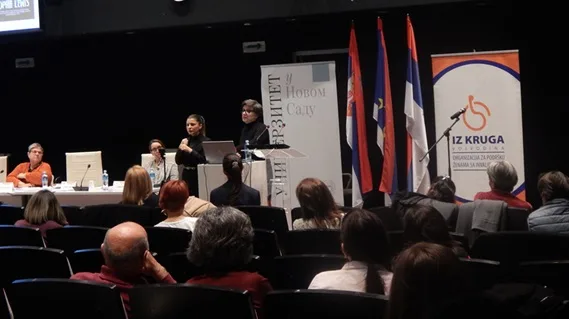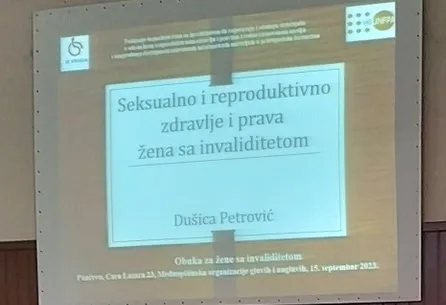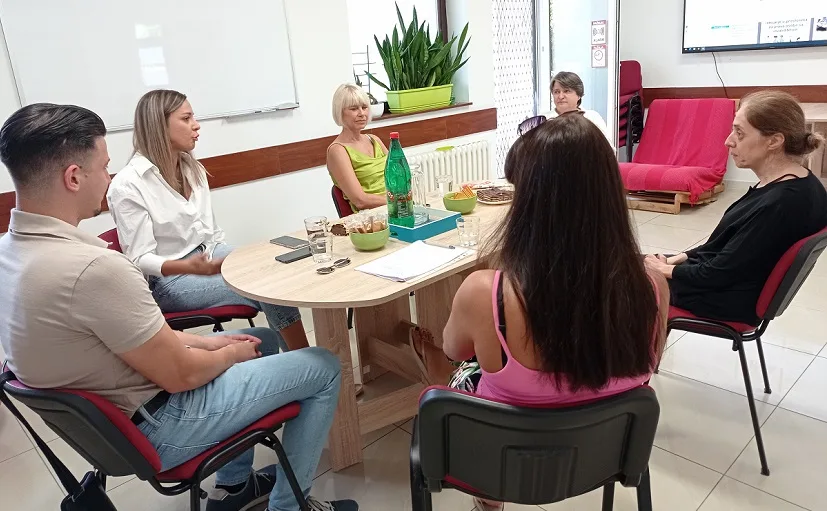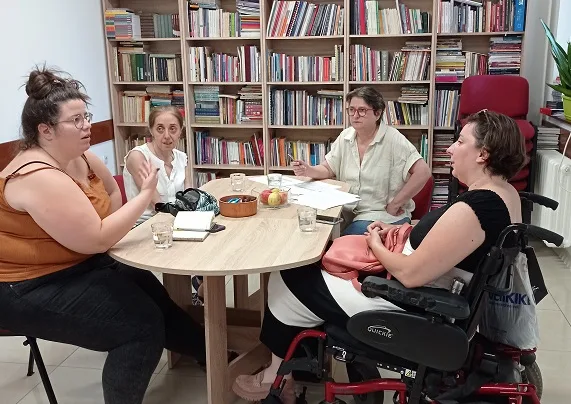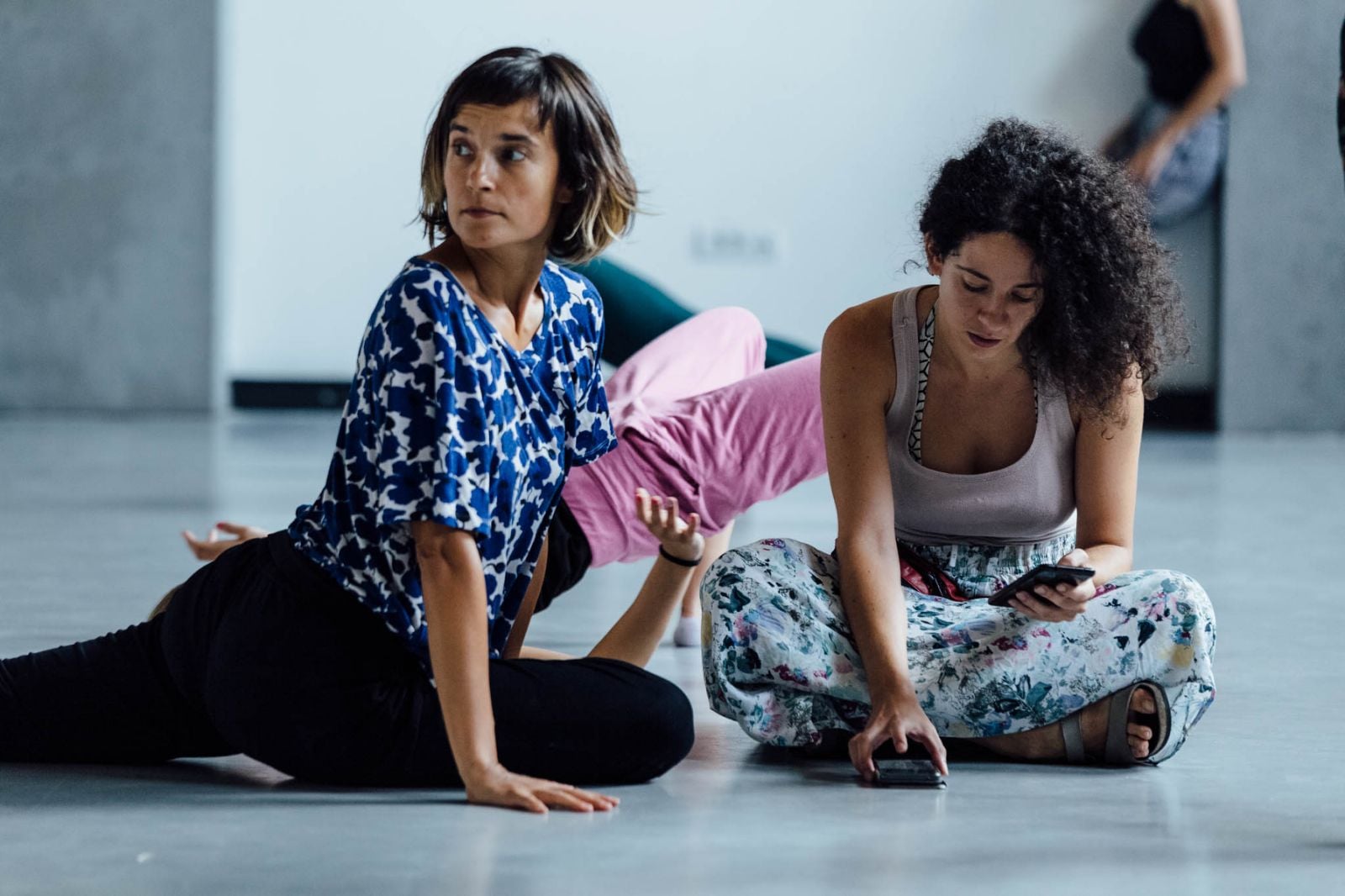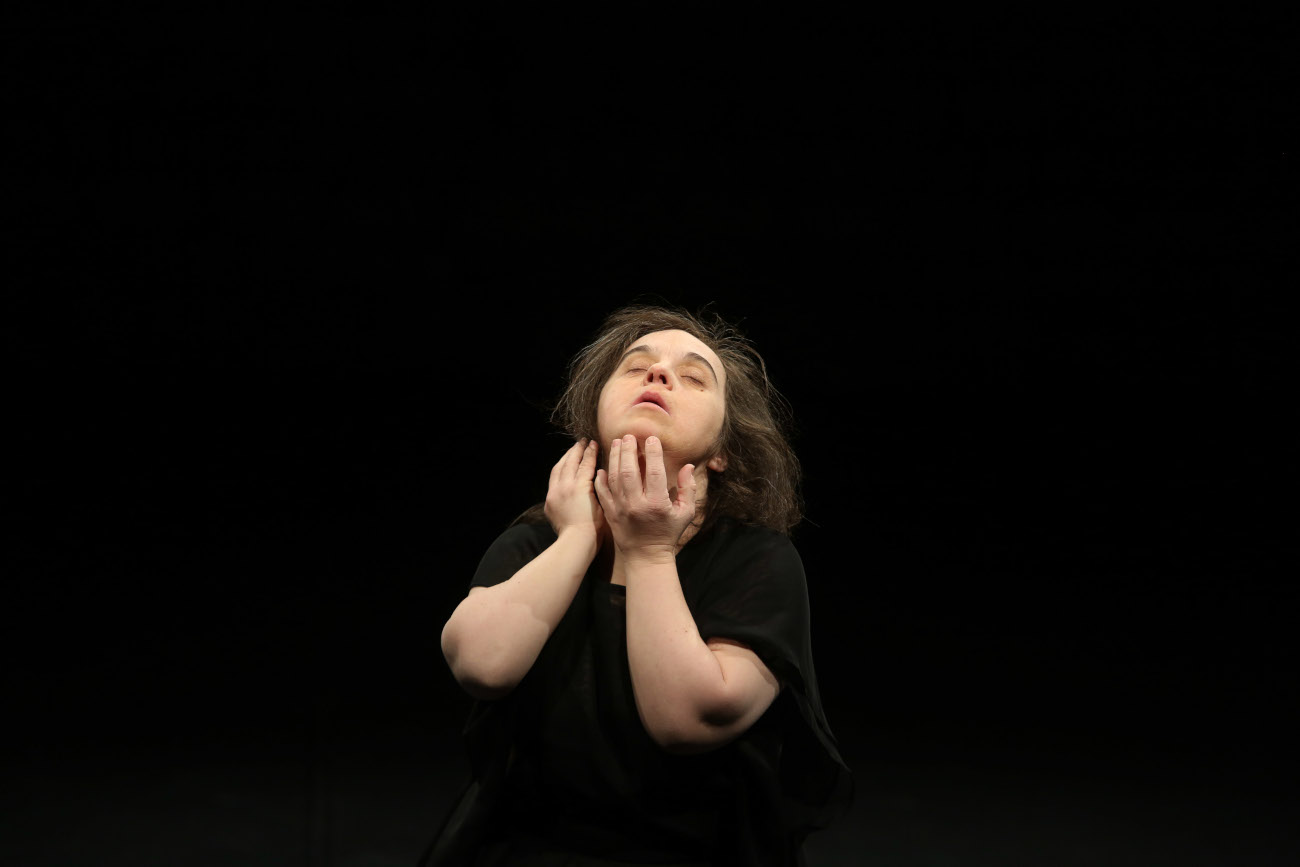Per.Art is an organisation from Novi Sad, active for already two decades in the field of contemporary performing arts and inclusion in culture. It groups persons with learning difficulties, their parents and family members, professional artists from the fields of dance, theater, and visual arts, defectologists, other professionals, and volunteers. Per.Art group carries out its activities through the Art and Inclusion program, designed for creative work and inclusion of persons with learning difficulties, as well as the Contemporary Dance program, which turns towards artistic research projects to develop the contemporary performing arts scene in Serbia, as well as international networking.
Regarding Per.Art’s creative processes, dance research, art and activism, audience development, and the importance of interaction between artists with and without disability, we spoke to Per.Art’s members Olivera Kovačević Crnjanski, Dalibor Šandor, Nataša Murge Savić, Đorđe Hrubenja, and Frosina Dimovska.
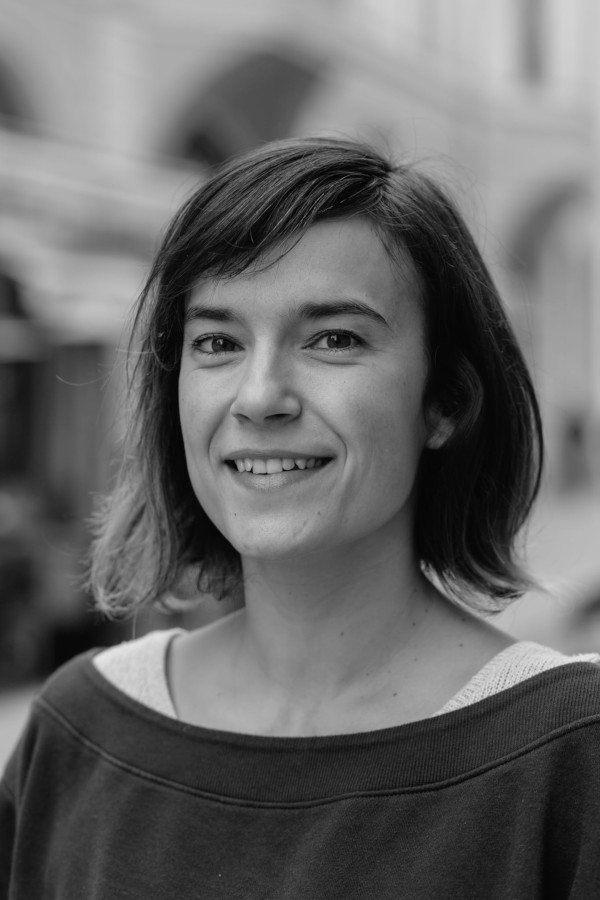
Frosina Dimovska 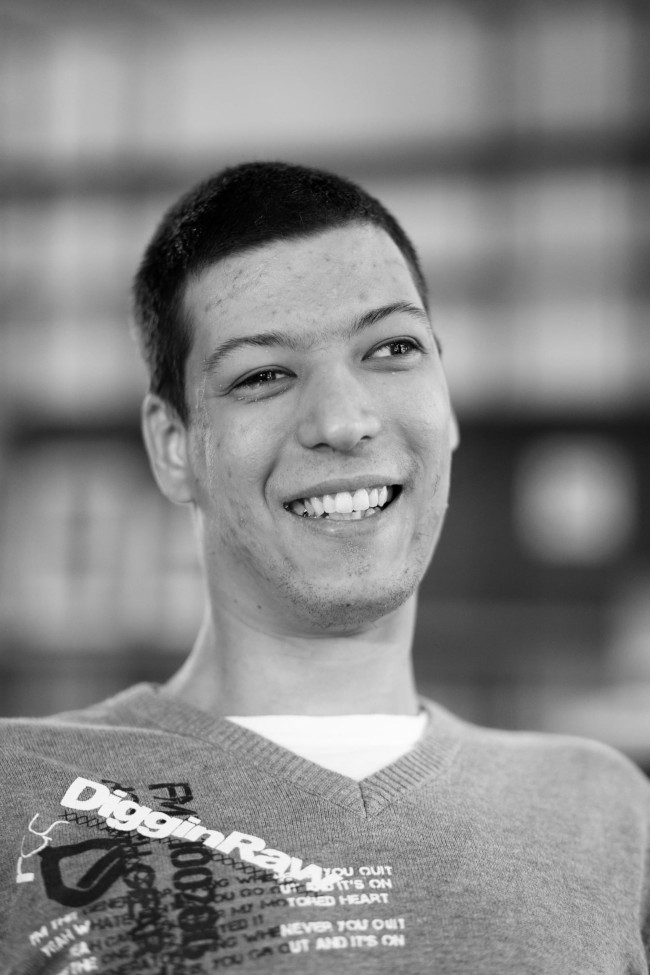
Đorđe Hrubenja 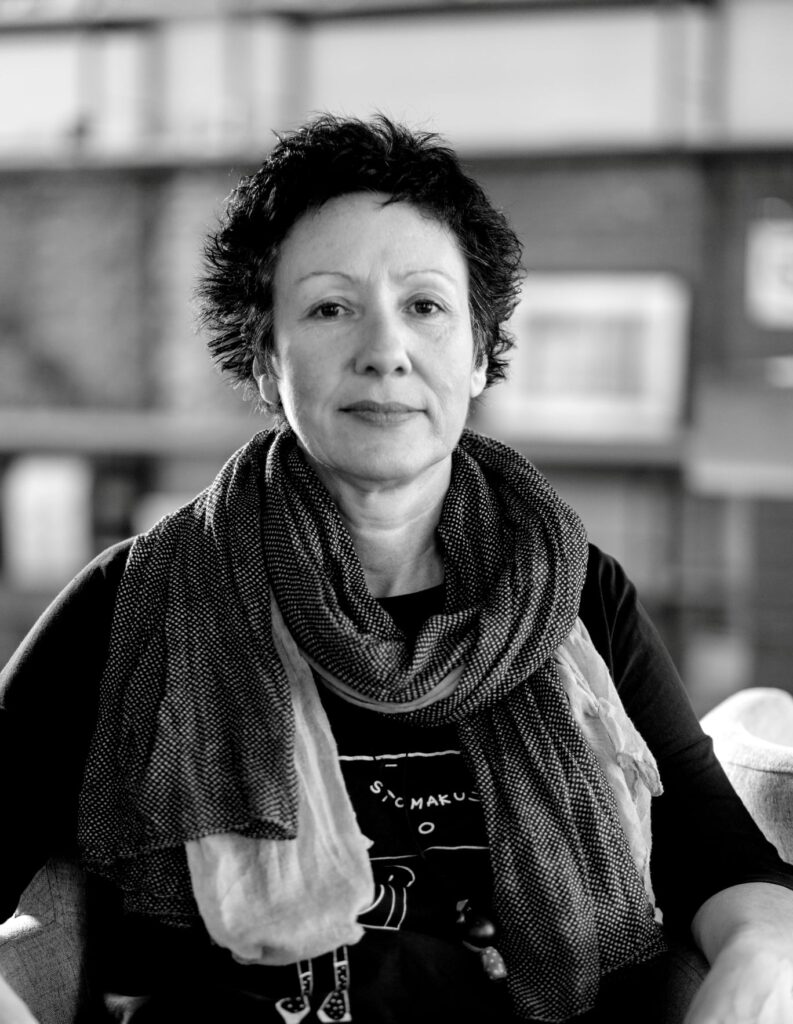
Nataša Murge Savić 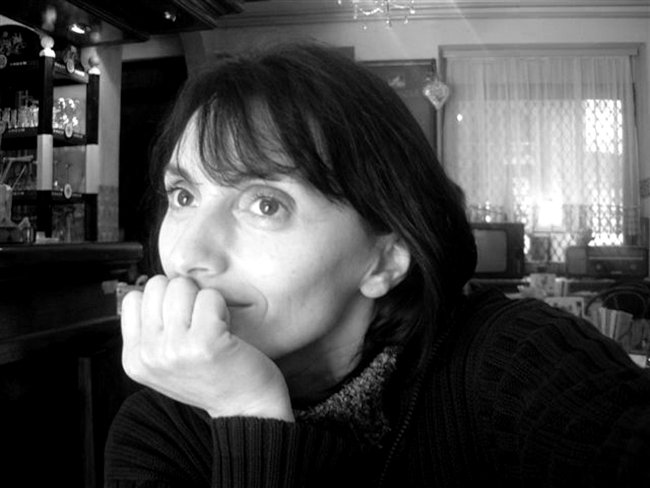
Olivera Kovačević Crnjanski 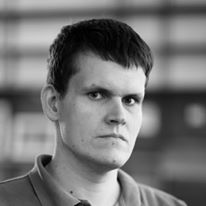
Dalibor Šandor
Olivera Kovačević Crnjanski initiated and led The New Dance Forum within the Ballet of the Serbian National Theatre, and she has been a Per.Art member since the organization was founded. She is co-author and choreographer for Per.Art performances as well as often a performer.
– I’ve always been captivated by dance and dancing. I found the most space to engage in dance – in the way that appeals to me – in my work with The New Dance Forum and Per.Art. The collective work, enthusiasm, respect, love, tolerance, and solidarity are the principles we foster and those principles keep us going.
Dalibor Šandor is a performer, co-author of Per.Art’s We Are Not Monsters. He has been a member of the group for ten years.
– This is where I feel free, as if I’m in a different world. I try to do my best every time and to show that we, persons with disability, shouldn’t be underestimated, but we shouldn’t be overestimated either.
Nataša Murge Savić is a visual artist and one of the founders of Per.Art. She is working as executive producer, coordinator, organiser, artistic leader, costume and set designer.
– I was „pulled in“ by the Art and Inclusion program through the work on costumes and sets for the performance Gatka, in 2003. I’ve recognized in a moment that this is what I wanted to do, and this is what drove me. I realized that I wish to fight for the rights of our colleagues with disability to make and enjoy art, and I have employed my skills trying to create and expand this space in our society, in collaboration with my colleagues. Finding models and attaining skills to develop this work in the civil society was a real challenge, the battle has been going on for 20 years, and there is no turning back.
Đorđe Hrubenja is educated as a telephone operator, and before joining Per.Art he had some folk dancing experience. In the last two years, he performed in two Per.Art shows.
– It means a lot to me to be a part of the group, because of friendships, work, and guest performances. Through my friends from Per.Art, I can learn about the lives and work of artists with disability from around the world.
Frosina Dimovska is a ballet teacher in Novi Sad Ballet school; in Per.Art she is a performer and leader of inclusive dance workshops. She is a member of Pokretnica dance collective, as well as co-founder of Practicable – Platform for Contemporary Art and Culture.
– These are all self-organized structures, in which, with my friends and collaborators, I engage in educational work and (co)authorship in the field of contemporary performing arts, trying to establish and improve conditions of work on the local scene of contemporary dance. What makes Per.Art unique is its artistic work, as well as the group of committed, brave and professional artists with and without disability. This work incessantly teaches me to listen more and try to understand better the world around me and the society we live in.
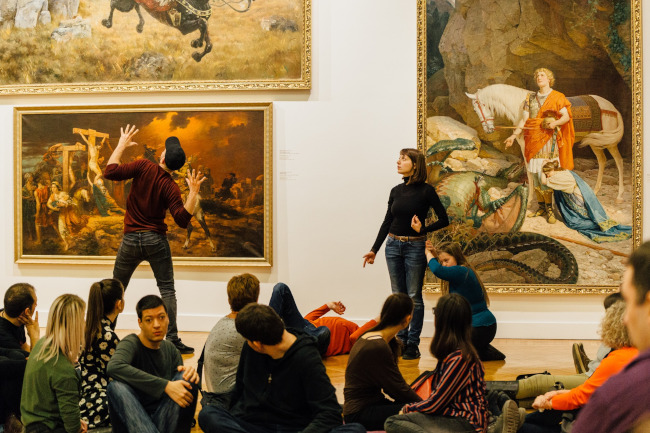
We Are Not Monsters
Photo: Aleksandar Ramadanović
How was the organisation founded and where did the name come from?
Nataša Murge Savić: The group that was gathered around Per.Art since 1999, in cooperation with various organisations, carried out numerous projects in Serbia and abroad. In 2005 we were registered as NGO in Novi Sad. The idea came from artists, cultural workers and activists who recognized the great creative potential of persons with disability through direct encounter; this potential inspired their artistic work and instigated them to rethink the existing social relations. Natalija Vladisavljević, Per.Art member and artist with Down syndrome, in her book This is how it makes sense to live like this, wrote: If the audience would demand dignity from actors, they could judge for themselves what the theater should be like. And imitating life is neither cultured nor nice! In this demand to avoid the imitation of life in the theater, but to look for something new and different, and in her vision of theater as a place where the audience is not in a passive position, we have found the key point to the creation of the Art and Inclusion program. That is how this inclusive art group was formed, and in the past two decades, it has produced theater shows and exhibitions that were presented to the public in leading cultural institutions in Novi Sad, as well as in art centers and festivals in the country and abroad. Per.Art is a conjunction of words that can stand either as full words or as abbreviations – for art, or performative arts.
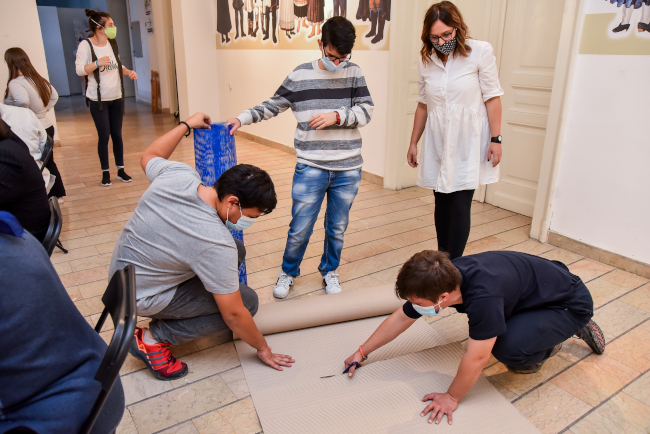
Dance and Texture
Photo: Marija Erdelji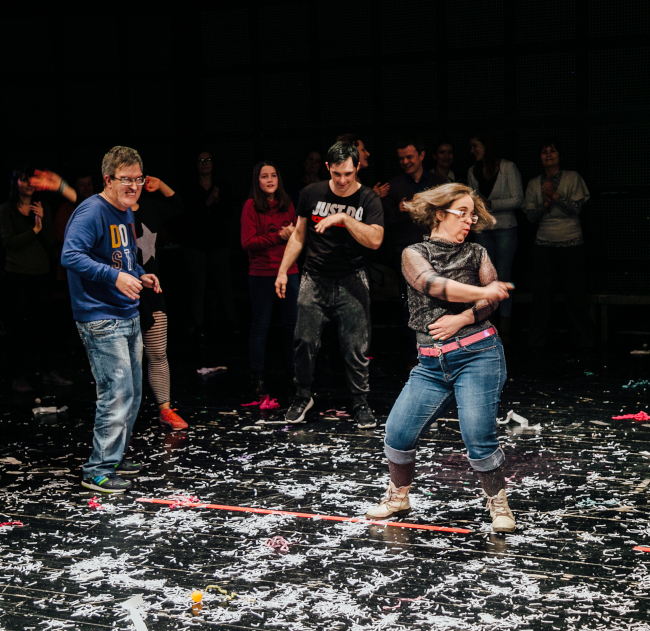
The Little Party of Missed Dances
Photo: Aleksandar Ramadanović
Who are the members of Per.Art today and what brings people to this organization?
Dalibor Šandor: I think that people are coming because they are interested in what we do, in our performances and workshops. In the times of Corona, they can learn about us mostly through Per.Art’s Facebook and Instagram pages, but also through personal contacts and the network that we have created with our audience. Earlier, they were able to see us in theaters, Serbian National Theater, Youth Theater, Ujvideki Szinhaz, and our last performance was made in a museum space, in The Gallery of Matica Srpska. This is one of our most important performances because it talks about how people see us, and we are showing them who we are in an interesting way, making a surprise for the audience.
Đorđe Hrubenja: I heard about Per.Art in the work center, from my friends who were already members of the organization. I asked around a bit and everyone told me that Per.Art is a great thing, that they do contemporary dance and deal with different important topics for persons with disability. I came to a workshop, watched some shows, and then we agreed that I’d try joining some rehearsals, and then maybe I’d be in a show. The Little Party of Missed Dances was my first show, and then I played in the performance We Are Not Monsters, based on Dalibor’s idea.
Nataša Murge Savić: Per.Art is working on developing the process of inclusion in culture and arts. Our work is dealing with the production and promotion of the creative, artistic work of persons with learning difficulties on the contemporary art scene, connecting young people with learning difficulties, professionals from the field of theater, dance, visual arts, experts from the field of special education and rehabilitation, philosophers, architects, as well as representatives of cultural and educational institutions. The initiative to create this program didn’t come from people who are professionally or privately connected to persons with disability. It came from a group of artists and cultural workers, it kept spreading and was joined by various experts, collaborators, friends… This fact surely defines our work. Our group of artists with learning difficulties now counts 16 members.
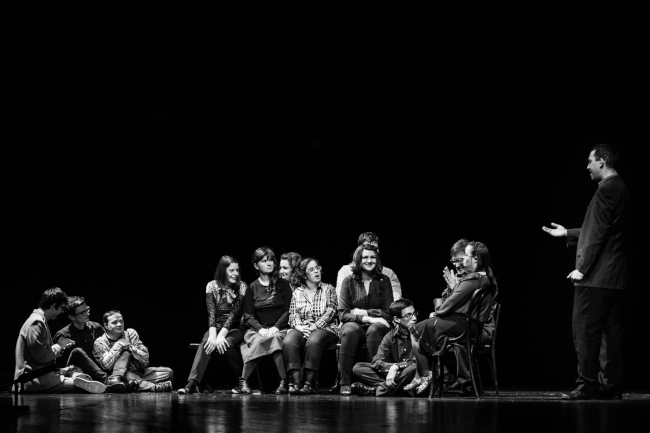
Empty Voice
Photo: Aleksandar Ramadanović
Per.Art has existed for 21 years. What kept you going?
Nataša Murge Savić: Apart from our artistic and production work and numerous socially engaged activities, we manage to spend time together, to stay in touch daily, to care about each other; that constant presence and involvement in all segments of the lives of our members are what holds us together as a group. Per.Art cannot stop, our performers often say. I believe that there lies our strength.
What has changed during those two decades of work, and what stayed the same? Is there a turning point in the history of the organization?
Olivera Kovačević Crnjanski: I would say that the basic work principles never changed. We have changed. We grew and looked for new topics for our work, listening to the needs and interests of the entire group, as well as for new ways to articulate them on stage and share them with the audience. Some of the shows that we made in the first ten years were based on poetic texts of our colleague Natalija Vladisavljević, an artist with Down syndrome (As If Life Had A Beginning And An End, Beautiful Dreams Have Hope, and others). The turning point came along with the arrival of our, at that time, new member, Dalibor Šandor, in 2013. That’s when we made Empty voice, a performance where the members of our inclusive group told their life stories on stage, to finally initiate, at the end of the performance, a conversation with the audience. Empty Voice was followed by even more demanding shows, which stands for content, as well as for stage performance and production demands. In 2018 we created Dis_Sylphide, which was our first international co-production with Kampnagel, a famous cultural institution for contemporary performing arts in Hamburg. The performance was a co-production of Per.Art and an inclusive theater group from Hamburg, Meine Damen und Herren. In the following two productions, we managed to do what we aimed for, and what we tried to create the conditions for in previous years, which is to carry out performances whose authors would be our colleagues with learning difficulty – Dalibor Šandor and Natalija Vladisavljević. The performances are based on their ideas, which were developed in collaboration with artists from abroad, choreographers and dramaturges, Per.Art members, and artists from the local scene. Dalibor’s performance We Are Not Monsters took place in The Gallery of Matica Srpska, while Natalija’s Dance in 21st Century was created for theater stage, as Natalija explained in her concept. This was the first time, in this part of Europe – though these cases are rare in the whole of Europe – that artists with learning difficulties appear as authors.
Frosina Dimovska: In our work, we always start from the interests and needs of our members with disability, and from there we create the performances together, through dialogue and care about the wishes and needs of others. This principle never changes. One of the major changes is the fact that, in the last couple of years, we are much more present on the international performing arts scene, that our performances were shown on festivals that aren’t specifically designed for disability arts, as well as that our members collaborate more and more often with artists from abroad, so much that this became a natural thing. The authorship of artists with disability gets more and more visibility in our workshops and productions.
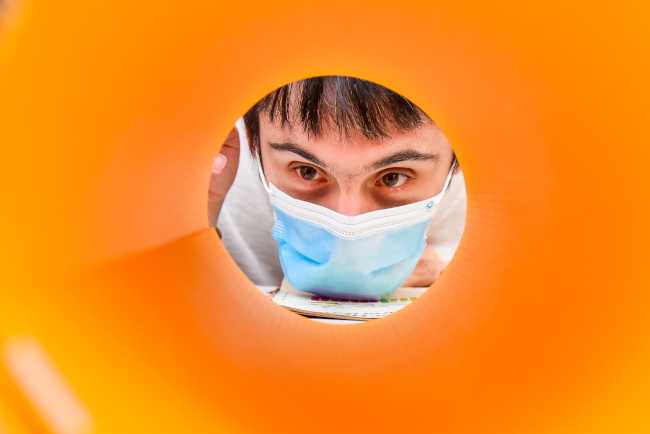
Dance and Texture
Photo: Marija Erdelji
How would you explain the term inclusive art to someone who never heard of it?
Đorđe Hrubenja: Inclusion helps others to understand and accept persons with disability.
Olivera Kovačević Crnjanski: Inclusive art means cooperation, support, closeness. It means constant exchange of ideas, creating together, understanding and accepting differences.
Dalibor Šandor: Performers in inclusive art have different abilities. It’s similar in everyday life, someone is always better at something than someone else, but this gets more visible with persons with disability. In our performances, we find a way to establish a goal that we go towards together, and to which we can all adapt. There are no orders or disqualifications; we find agreements as a big collective.
Art and Inclusion program promotes the artistic work of people with learning difficulties. Which activities are carried out in the frame of this program?
Nataša Murge Savić: In the frame of Art and Inclusion program we have created numerous artistic projects – performances, workshops, exhibitions, we have published two books and co-produced a movie. We also carried out various projects and programs in the field of culture, free time and social life of persons with disability (conferences, panel discussions, symposia). We have created a network of institutions for the promotion of inclusion and launched different initiatives to increase the accessibility of institutions and the visibility of persons with disability and their artistic work in our society.
What are the things that can happen and emerge in the interaction of artists with and without disability, less likely to appear in non-inclusive projects?
Frosina Dimovska: From my experience with the work in Per.Art, in the interaction and cooperation of artists with and without disability, recognizing and respecting wishes, opinions, abilities, and a specific artistic expression of each actor in the process takes much more space. Working with this group has taught me to apply these principles and values in non-inclusive projects, as well as in everyday life – though there, I need to practise more.
Dalibor Šandor: In inclusive projects there’s an exchange of different experiences, and in those encounters, artists can encourage one another, they can learn lots of new things through interaction. I also think that it is important to learn more about us, persons with disability – sadly, many people are still quite ill-informed, prejudice still governs our society. For that reason, I think that there should be a school subject – how to behave with persons with disability, which is the right way to look at them, etc.
Đorđe Hrubenja: Through collaboration with other members of our group we are making new opinions and ideas, we are setting new borders for ourselves and passing over them. I think that in this way everyone can understand that we, persons with disabilities, are capable of much more than many people imagine. Some consider us monsters, good for nothing. I would like to add that we are creating our collective story, or to put it better, our collective history.
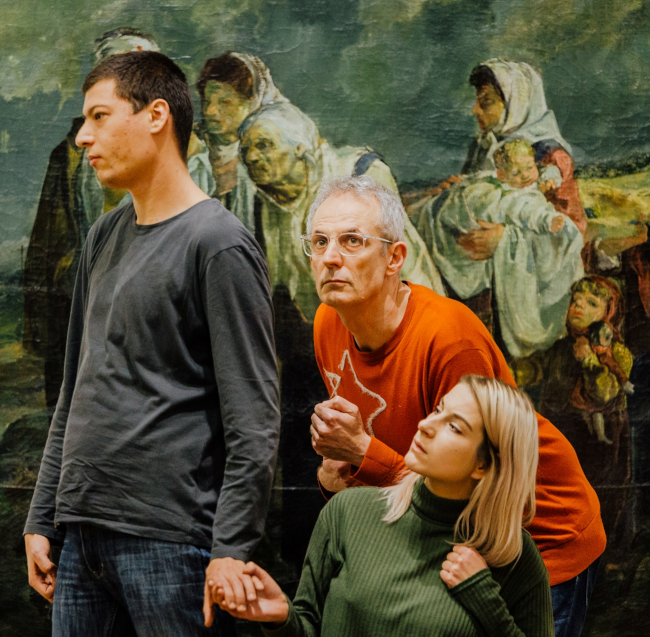
We Are Not Monsters
Photo: Aleksandar Ramadanović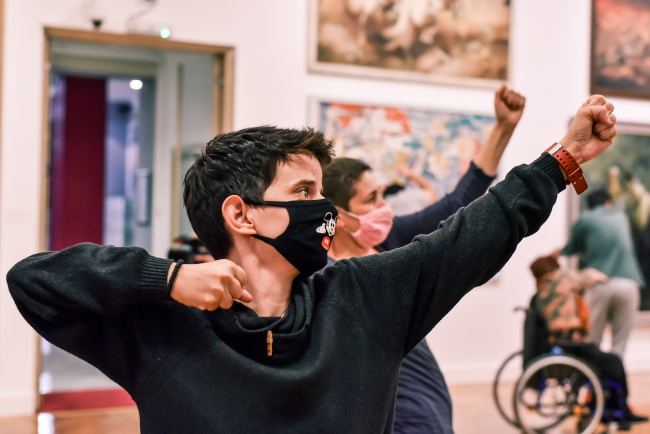
The Road More Travelled
Photo: Marija Erdelji
In which ways can the experience of disability contribute to an artistic project? Does disability become part of the artistic expression, or something else?
Frosina Dimovska: I’m not sure that I can answer this question. In all high-quality artistic projects with persons with disability what’s specific is not the disability, but the recognition of something that we all have in common, something that connects us, regardless of our abilities.
Dalibor Šandor: I think that this depends on the type of disability, whether it’s intellectual or physical, and all that can become the artistic expression, in a way. We all adapt according to our abilities, and this is what determines the work. It’s impressive, I’m surprised every time at what some of my colleagues from Per.Art can do. Disability is not the artistic expression in our performances, there we show what we can do, we show that we respect each other equally and that we are not excluding anyone. We have no intention to cause pity, it’s just the opposite. Though the audience does cry in our performances, sometimes, that’s what happened on the last show, but for very different reasons.
The Contemporary dance program deals with artistic research. What does it mean to research in dance, how do you go through the process and what do you discover?
Đorđe Hrubenja: I would say that we research some new notions, new things, new opinions, and ways to do a show or a dance. When we were working on We Are Not Monsters, for example, we dealt with our fears. We spoke to Dalibor and everyone else about fear, then we made a story about it, and from there we devised a choreography. Everyone had their own story and choreography, we would watch each other in rehearsals and analyse what we could do better or different. Thanks to contemporary dance, I’ve learned lots of new moves that I couldn’t do before.
Dalibor Šandor: This is a very interesting question. Through contemporary dance, I’m discovering my new abilities, in which ways my body can move, my range of motion, etc. It occurs to me that, through dance, I can show beauty, even grace, which doesn’t depend on one’s body type. To research in dance means to experiment with different motions: what are the things we can do and what we can say with them, how creative we are, and how patient. Contemporary dance has some kind of relaxing, calming influence on me, I feel liberated, it feels as though nothing limits me, I’m surrounded with friends and collaborators who are encouraging me. I always ask them how it was, how I did my part, and if they understood.
The process develops through the research on certain themes and contents, from there we find inspiration, and then the movements. For example, in our last performance, which was done according to my idea, it was Saša, our colleague and artistic director who first asked me how would I name a performance if I would make one, so I said: We Are Not Monsters. This process developed a bit slower, because there were many of us, and we always consider the ideas of all the members. When we started working on the performance, I had individual workshops with the dramaturge Marcel Bugiel. Before that, I met the choreographer Xavier Le Roy in Geneva, who told me that it was a genius idea. He joined us later, instructed us, and gave us ideas on how to use the museum space for this performance. In the workshops, we have all researched the monsters together and explored stories about fears and monsters. During individual workshops, I was wondering where to find inspiration for the monsters, and then I thought of a video game that inspired me. It was an interesting experiment, a good challenge.
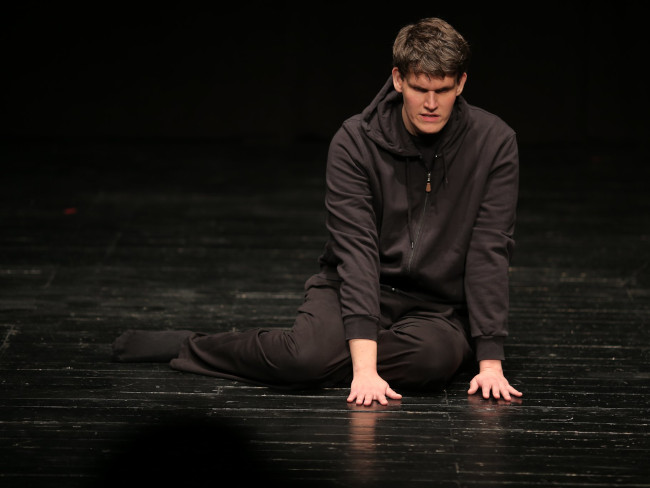
Dis_Sylphide
Photo: Manja Holodkov
How do you create your performances? Is there a matrix that’s specific for creative processes in Per.Art?
Đorđe Hrubenja: In Per.Art we all work together, we make a show as a team, and everyone has the right to say what they think about the show we are working on.
Dalibor Šandor: Our performances are created through our collective ideas. It is usually Saša who comes with a proposal, but it can also be one of us. We cooperate as one big collective, and the matrix we are using is actually – cooperation.
How do you measure the success of a performance?
Dalibor Šandor: We measure the success of a performance by the volume of the applause – this is the first thing that comes to my mind; also, we measure it by the reviews written by journalists or critics. If my friends come to see me, I feel as if I’m performing in front of a critic, and then I feel a bit different, I have stage fright. The success can be measured with possible invitations to a festival or a guest performance abroad. In 2018, for example, we made a performance together with our colleagues from the theater group Meine Damen un Herren,and we felt honored to be invited somewhere quite different, in a big theater. The feeling was wonderful, and the experience as well, everyone did their best.
Đorđe Hrubenja: Firstly, the performer has to be convincing enough, open for cooperation, and ready for the performance. He needs to ask himself if he is sure of himself. That’s what’s necessary to achieve success, not only in a performance. Once the show is over, we measure the success by the applause and everyone complimenting us. I’m checking how many people came to see us, that’s my first concern, and then: it’s important if they found the point of the story interesting and important enough. The audience decides if they are going to stay with the show and if they are going to come again. We love to talk to the audience after the show, their opinion matters to us, we like getting advice or feedback. The critique and the praises are just as important. I saw that we got some good comments and likes on Facebook. Because of the Coronavirus, Facebook is now the only way to communicate with the audience and between ourselves.
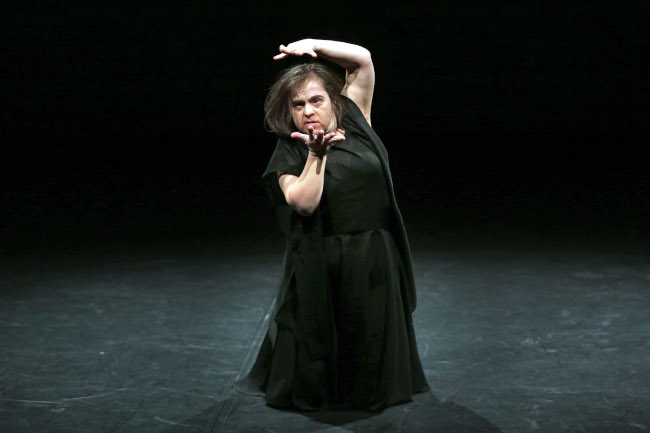
Dis_Sylphide
Photo: Anja Beutler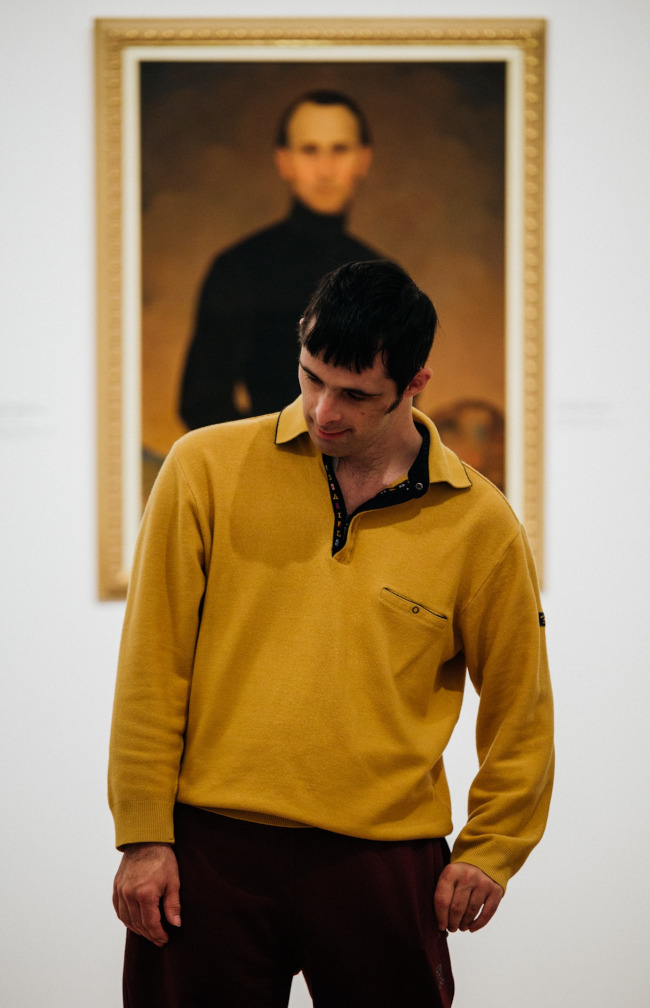
We Are Not Monsters
Photo: Aleksandar Ramadanović
What does it mean to deal with audience development, and how do you do this in Per.Art?
Olivera Kovačević Crnjanski: To answer this question, I first have to say why the audience matters to us. Whatever we do, we do it with the idea of sharing everything we thought about and looked for with the audience, through a performance, all the questions and answers. The opinion and the reactions of the spectators are very important, as well as the interaction during the shows. The audience is important because they will spread the idea of the necessity of inclusion in society. They will also spread the word about programs developed through the cooperation of artists with and without disability. Working together with the audience is the only way to remove prejudice and change perspectives. Our participation in Europe Beyond Access project enabled us to exchange experiences and ideas with six other European partners on many topics, among which is dealing with audience development. We have decided to present our way of working to the audience, not only through performances but also through educational workshops. We consider equally important cooperations and partnerships with other organizations and institutions, that fight for rights and dignified life of persons of disabilities, with people involved in artistic work with people with disabilities, as well as with cultural institutions. That is how, apart from getting the necessary work and performance space, one part of the audience of those institutions also gets to know us. We believe that this model of cooperation is beneficial for all and that together is the only way to bring change to the society we live in, to make art accessible to everyone.
How do you understand the relation between art and activism? How do they intertwine, do they become equal at some point, can an overemphasis on activism overrule the artistic and aesthetical aspects of the work? Is there art beyond the strategy of social engagement?
Dalibor Šandor: It’s a complicated question or questions. I think that through art, people can moderately deal with their rights and fight for them. This is the topic in our performances, at least in the last three, that are concerned with our rights in society. We tackle the topics of exclusion of persons with disability from society, speak about things we need to say, and about our emotions. I wish I was more engaged, I’m my own biggest critic. Engagement is necessary, both in art and activism. In some situations, they can assimilate, but this also depends on the views of the audience. Different people can see the same thing differently. It all depends also on the sort of art in question. For example, some performances can involve self-injury, but sometimes they don’t make a good impression. They just appear too shocking. If we overstress our disability, people will just feel pity, and that is not our goal.

Dis_Sylphide
Photo: Ognjen Milivojša
Since the moment the organisation was founded, what changed in our society as a result Per.Art’s activity?
Đorđe Hrubenja: I think that society should educate through our work, learn from us. I’m sure that people should change for the better, they should hear our stories, regardless of whether they are disabled or not. We should listen to each other. I noticed that many people came to watch us so they can see something new and change their opinion. Since I joined Per.Art, I can understand myself and young people with disabilities much better. I’ve changed. I feel pleasure, above all, I’m in good company, I met lots of new people with whom I can be open, and this means a lot to me. I feel freer and more self-confident.
Dalibor Šandor: I’m sure that on Facebook I could read interesting comments in which the society expresses their opinion about us, but I don’t have Facebook so… I’ll ask around. I feel a great change in myself. I’m much more self-confident, people are impressed when they see what I do. I feel that we belong to one another much more – as if there is some sort of evolution of our collective understanding. If I wasn’t a member of Per.Art, I wouldn’t be able to understand dance in the right way, I wouldn’t be able to analyze shows and dances, nor people in general.
Photo: Marija Erdelji
What are the current activities in Per.Art and how did the COVID crisis and general uncertainty influence your work? Can we talk about plans for the future?
Nataša Murge Savić: From the first months of the pandemics, Per.Art was active with online platforms. We had a series of talks entitled In Conversation With… Saša Asentić invited colleagues from the field of contemporary dance, performance, and disability arts for online talks – artists from New York, Berlin, Vienna, Tehran, Hamburg, Zurich, Warsaw, Athens, Novi Sad, and other cities. These conversations were an opportunity for us to hear how the invited artists dealt with the situation we were all in globally, how it affects us as artists and citizens, what happens to art in challenging times, and how art can contribute to strengthening the culture of solidarity. A Square Meter of Movement was a series of dance classes for practicing at home, led by dance teachers from Novi Sad, giving us ideas on how to keep our spirits high and bodies active during the lockdown. In the series My word… we had guest writers who would select texts to read from the books of Natalija Vladisavljević, and respond to them with some texts of their own. We had invited some friends who write, but also keep their words, those who have something to say and search for words that give meaning, build relationships, and conditions that give life dignity. After a couple of months of working and staying in touch online, this autumn we have had a new cycle of inclusive workshops led by our colleagues, associates, and friends: Tatjana Stojšić Petković, Jelena Alempijević, Frosina Dimovska, Milesa Milinković, Vesna Pašćanović, Nela Kovačević Milutinović, and Gordana Pajdić. These dance workshops or workshops that thematise dance through other media were meant for young people with or without disability, local artists, professionals, and experts from various fields, who wanted to know more about inclusive work. One of the objectives was audience development, but also promoting the idea that art belongs to us all, and that it must be accessible to everyone. In the years ahead of us, we plan to perform Dance in the 21st Century, to make another new production, present artists with disability from abroad, organise a symposium and more group and solo residencies, as well as many other events. Everything is uncertain and everything depends on the pandemic – this will influence the way we think about our activities, the formats, and the means to carry them out.
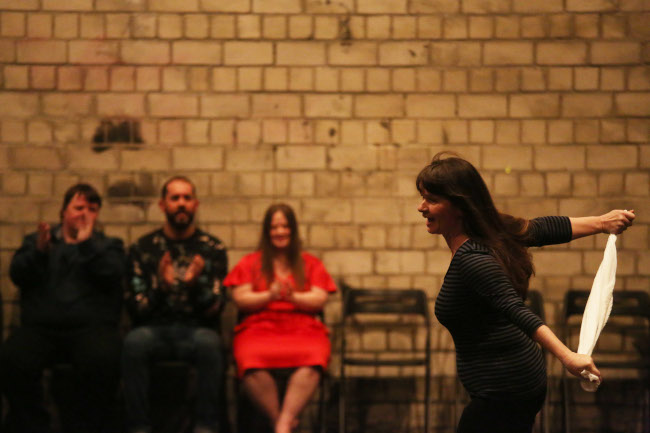
Dis_Sylphide
Photo: Anja Beutler
Translated by: Frosina Dimovska

